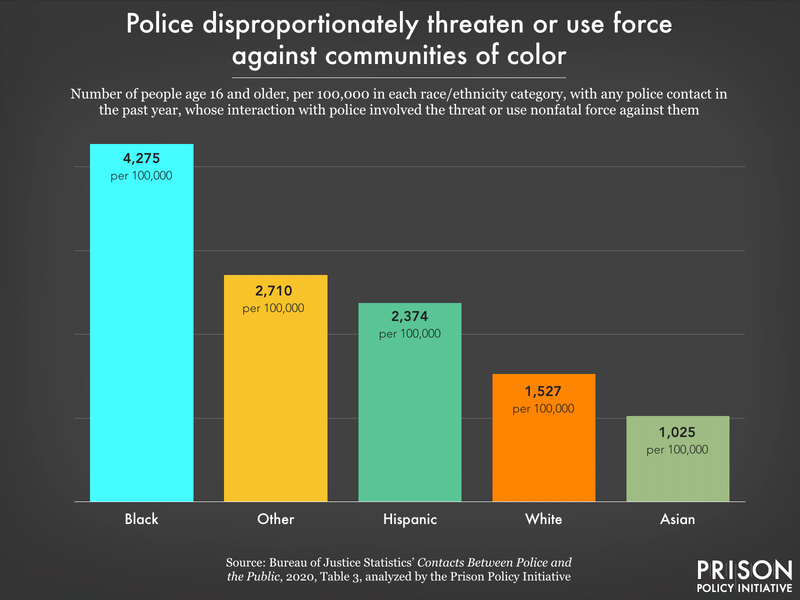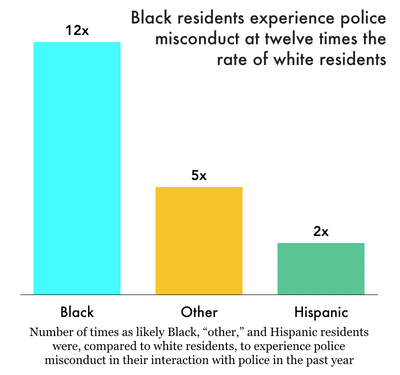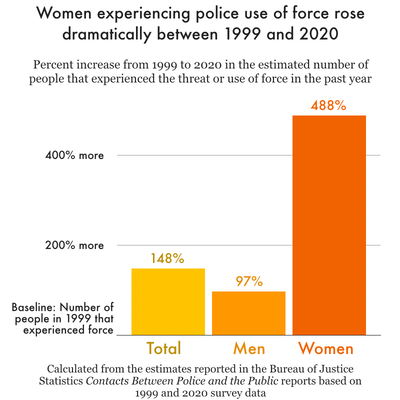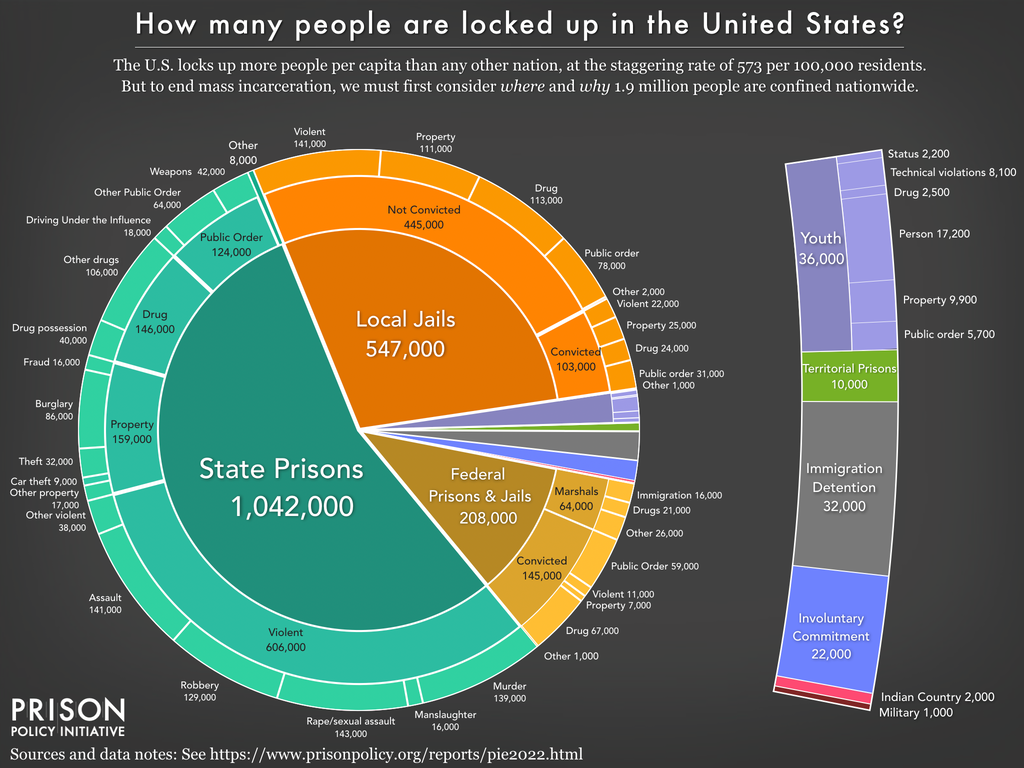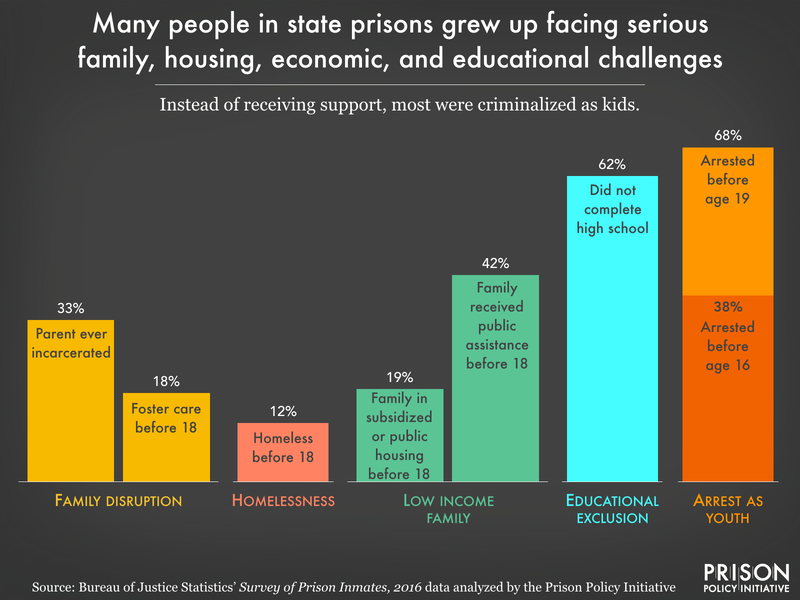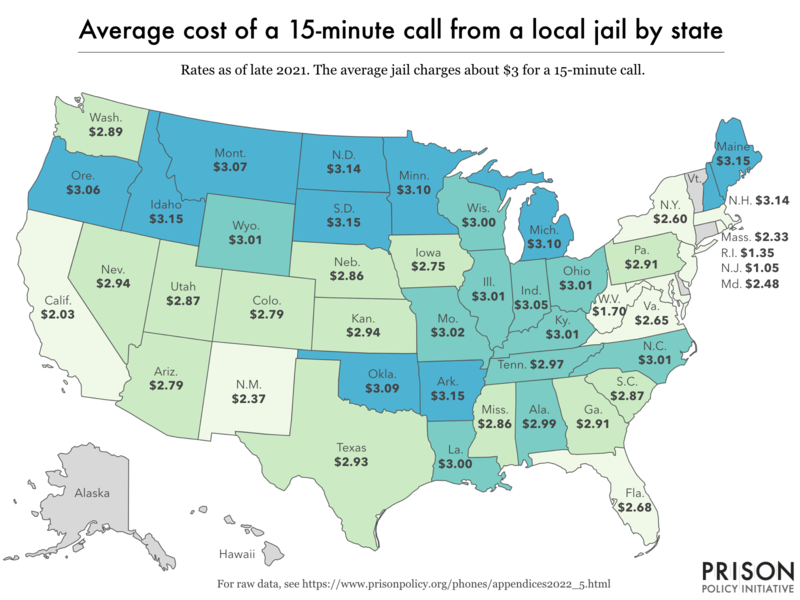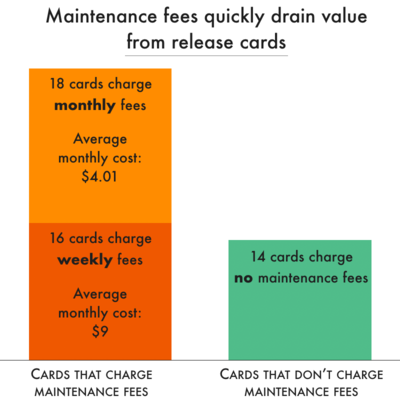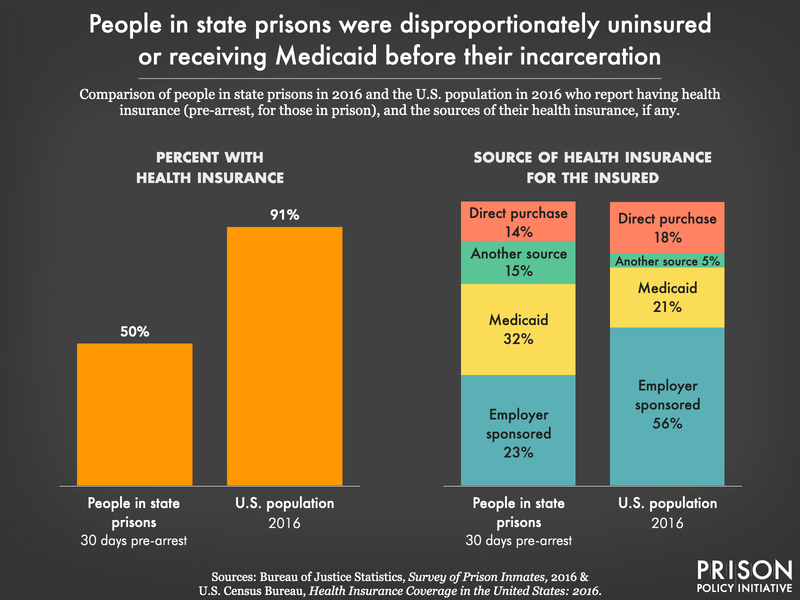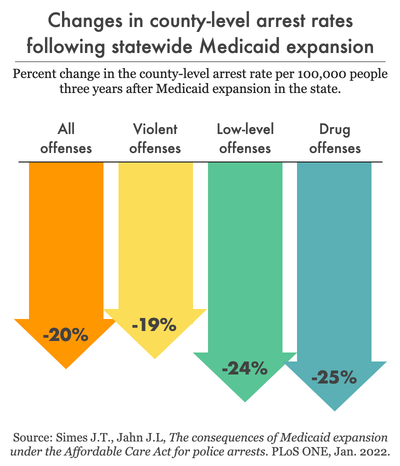How your local public housing authority can reduce barriers for people with criminal records
Millions of people with criminal records likely meet the income eligibility requirements for public housing assistance. But needlessly strict local policies lock them out of housing. We explain how your public housing authority may be overly exclusionary.
by Selena Muñoz-Jones and Emily Widra, February 15, 2023
Housing is a human right: the right to adequate housing is recognized by international law, including the Universal Declaration of Human Rights. But we know that in the U.S., hundreds of thousands of people face homelessness, and there are particularly high rates of homelessness and housing insecurity among formerly incarcerated people across the country. Our previous research found that people who have been to prison just once experience homelessness at a rate nearly 7 times higher than the general public. But people incarcerated more than once have rates 13 times higher than the general public. Inevitably, part of the problem is that public housing policies — which should be a part of a crucial safety net against housing insecurity — actually discriminate against people with criminal legal involvement and criminal records.
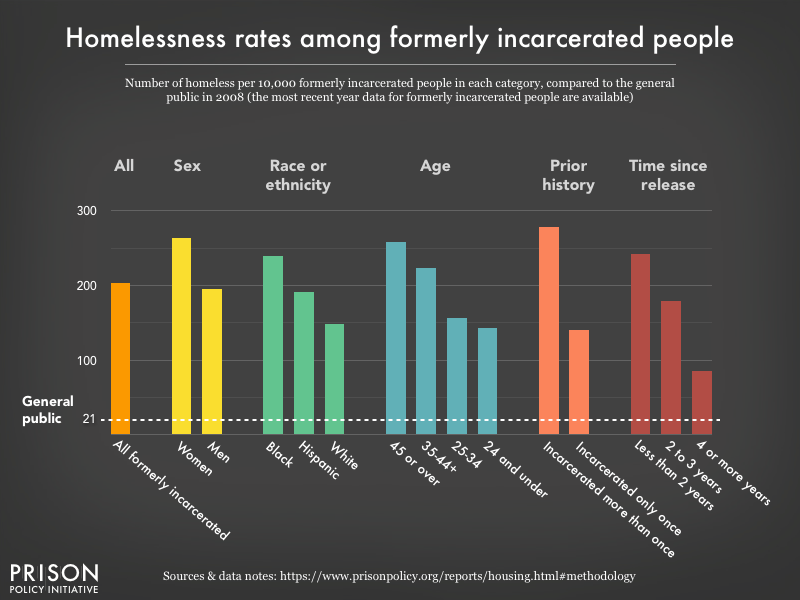
Part I of this briefing delves deep into the policies of the U.S. Department of Housing and Urban Development (HUD) that give local public housing authorities (PHAs) overly broad discretion to deny housing to people with criminal records. We review how PHAs wield this discretion to deny people housing in more ways than required by federal law. Part II of this briefing is a guide to critically reviewing public housing policies to help you identify the criteria your local PHA has chosen to use to exclude people with criminal records and to help you evaluate whether those criteria are necessary or potential targets for local-level reforms.
Part I: An introduction to local public housing authorities’ exclusion of people with criminal histories
We know that access to safe, stable, and affordable housing is crucial for health and well-being, and for formerly incarcerated people, housing is also crucial for successful reentry. The transition from prison to the community is rife with challenges. But before formerly incarcerated people can begin to address health problems, find stable jobs, or learn new skills, they need a place to live.
Across the country, there is a shortage of affordable housing which gives landlords the option of denying housing to people with criminal records (most conduct criminal background checks on prospective renters), leaving public housing, Section 8 vouchers, and other assisted housing as their only choices. But even public housing sets up barriers for people with any involvement with the criminal legal system. At least 79 million Americans have a criminal record1 and more than a quarter of formerly incarcerated people are unemployed, meaning that millions of people with criminal histories likely meet the income eligibility requirements for public housing assistance:
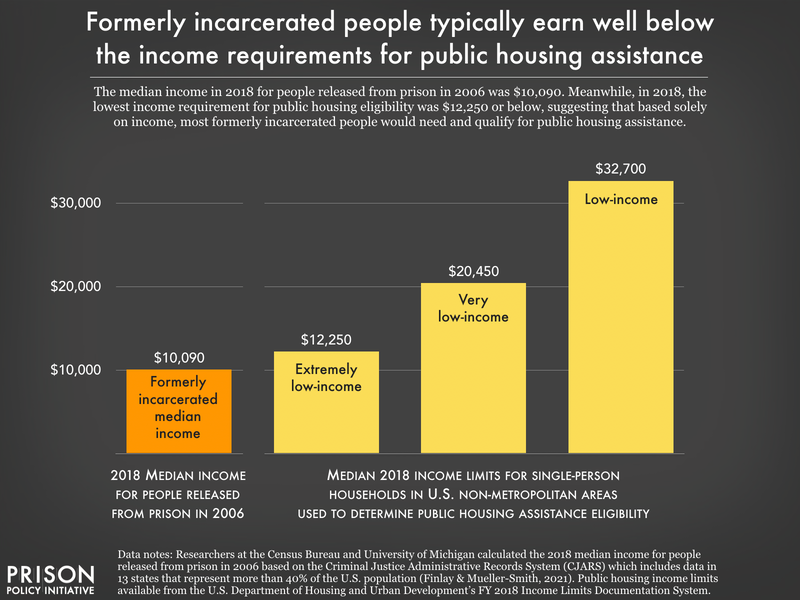
While the available data do not allow us to determine exactly how many people would qualify for public housing if not for their prior criminal legal system contact, based on just how widespread housing insecurity and homelessness are among formerly incarcerated people, it’s safe to assume that public housing policies significantly impact formerly incarcerated people. The criminal legal system disproportionately targets people of color, so the individuals, neighborhoods, communities, and families facing the collateral consequences of incarceration are also facing the compounded effects of poverty and systemic racism enshrined in housing policies.
Introduction to public housing authorities
There are over 3,000 public housing authorities (PHAs) granting access to the more than 970,000 public housing units for low-income families and individuals across the country. PHAs are local agencies that determine public housing eligibility based on general guidelines published by the federal Department of Housing and Urban Development (HUD).
In 1968, the Fair Housing Act expanded the Civil Rights Act of 1964, prohibiting discrimination in housing transactions (renting, buying, and selling) on the basis of race, religion, sex, national origin, family status, and disability. Importantly, the 1968 Fair Housing Act — nor any subsequent revision — has not considered criminal history status as a protected class, meaning that housing policies can legally discriminate based on criminal legal system involvement.2
However, in 2016, HUD issued a memo to PHAs clarifying that while having a criminal record is not a protected status, criminal records alone do not justify an automatic denial without justification. Because PHAs’ use of criminal history as a disqualification for public housing has disproportionately impacted Black, Indigenous, and people of color, this memo clarified that the exclusion of people based solely on criminal legal histories was a type of race-based discrimination. Even without identifying people with criminal histories as a protected class, this memo should have created a pathway to hold PHAs responsible for denials of housing with discriminatory intent or effects as violations of the Fair Housing Act. But although the 2016 HUD memo shifted PHAs’ policies from allowing a blanket exclusion of people with any criminal record to a more focused exclusion of those with drug or ‘violent’ offense histories, the official guidelines leave so much to local interpretation that PHAs are still able to discriminate broadly on the basis of criminal legal system involvement, as we explain below.
Doubling down on its 2016 guidance, in June 2022, HUD published the most recent changes to federal public housing policies. These guidelines advocated for PHAs to make their 2023 public housing policies3 as inclusive as possible for people with histories of criminal legal system involvement. It remains to be seen how PHAs will — or will not — incorporate this directive, as there is no evidence that HUD is limiting the amount of discretion permitted within the existing rules.
Denial of public housing assistance for people with criminal histories
HUD establishes two types of denials — mandatory and permissive — that local authorities use in making decisions about housing for people with criminal histories. The language in both sections leaves far too much room for discriminatory decision-making by local public housing authorities (PHAs).
Mandatory prohibitions
First, there are automatic reasons for which local PHAs must issue denials, as decreed by HUD (“mandatory prohibitions”) (24 CFR §982.553):
- The PHA determines that any household member is “currently engaging in illegal use of a drug;”
- The PHA determines that it has reasonable cause to believe that a household member’s “illegal drug use or a pattern of illegal drug use may threaten the health, safety, or right to peaceful enjoyment of the premises by other residents;”
- Any household member has ever been convicted of “drug-related criminal activity for manufacture or production of methamphetamine” on the premises of federally assisted housing;
- A household member has been evicted from federally assisted housing for “drug-related criminal activity” in the past three years; or
- Any member of the household is subject to a lifetime registration requirement under “a State sex offender registration program.”
As you can see, throughout these reasons for mandatory denials, there is still significant room for discretion at the local level. For example, there is no definition of what “currently” means and each PHA has the authority to define this timeframe however they want: for example, “currently” could be defined as within the last week, the last six months, or within the last year.
Permissive prohibitions
The second kind of denial issued for people with criminal histories is not federally required, but instead, the PHA elects to expand the criteria for denial. These “permissive prohibitions” often build on the above federal requirements to make public housing access even more restrictive. PHAs “may prohibit admission” if the PHA determines that any household member “is currently engaged in, or has engaged in during a reasonable time before the admission” the following behaviors (24 CFR §982.553):
- “Drug-related criminal activity;”
- “Violent criminal activity;”
- “Other criminal activity which may threaten the health, safety, or right to peaceful enjoyment of the premises by other residents or persons residing in the immediate vicinity;” or,
- “Other criminal activity which may threaten the health or safety of the owner, property management staff, or persons performing a contract administration function or responsibility on behalf of the PHA (including a PHA employee or a PHA contractor, subcontractor or agent).”
Ultimately, the federal government offers PHAs freedom in determining how to define all of the terms used above, including “currently,” “reasonable time,” “threaten,” and “peaceful enjoyment,” essentially granting PHAs vast autonomy over denials of public housing assistance for virtually any criminal history they choose.
Addressing your local PHA policies
Local PHAs can — and do — exercise a great deal of discretion when crafting and implementing their policies that determine who is and isn’t eligible for low-income public housing. While HUD provides guidelines on criteria for access and denial (24 CFR §982.553), individual PHAs often make their policies even more restrictive than the HUD recommendations. In fact, almost all PHAs use permissive prohibitions to make their policies more restrictive.
Not all public housing policies are created equal, and we encourage you to investigate your local policies. To that end, because these policies often use the same general template, we have looked at general trends across these policies to outline key areas for local advocates to take a closer look at. In Part II below, we offer a guide for analyzing of public housing policies. If you find your local public housing authority is needlessly discriminating against people with criminal histories, we encourage you to advocate for changes to the policies for the coming year. These documents are public and are often updated annually with public comment periods (often in the first few months of the calendar year). This is an opportune time to view the documents, provide necessary feedback, and advocate for fair and just housing policies in your community before they are submitted for approval and implemented.
Part II: How to critically review your local public housing authority policy’s exclusions for people with criminal histories
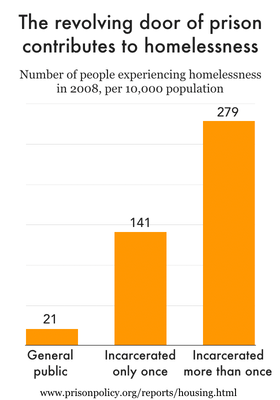
Local public housing authority policies often limit or completely deny public housing assistance to people with criminal histories. Some of the reasons for exclusion are mandatory and determined by the federal Department of Housing and Urban Development (HUD) (see Part I for more information on these mandatory prohibitions). But most public housing authority policies are even more exclusionary than the federal regulations require, needlessly denying housing assistance to those likely to need it most.4
It’s not always clear how or why people with criminal histories are denied public housing assistance, nor which rules could be changed through advocacy efforts. We put together this guide to help local advocates and decision-makers identify questions to consider when looking for ways to make local public housing policies more inclusive and housing more accessible to residents with criminal histories.
Here are 5 major questions to look at in your local policy:
- What actions and behaviors that exclude people from public housing?⤵
- How does the PHA define “current” and “currently”?⤵
- What evidence does the PHA uses to identify prohibited actions and behaviors?⤵
- How does the PHA denial process work?⤵
- Who are the decision makers?⤵
What kinds of actions and behaviors exclude people from public housing assistance?
There are five federally required “mandatory prohibitions”, or behaviors for which PHAs are required by HUD to deny public housing assistance. But there are far more “permissive prohibitions” — i.e., behaviors for which PHAs can choose to deny assistance regardless of federal guidelines — and we find that PHAs exercise significant discretion to make these policies more exclusive than necessary:
-
“Drug-related criminal activity.” HUD defines “drug-related criminal activity” as “the illegal manufacture, sale, distribution, or use of a drug, or the possession of a drug with intent to manufacture, sell, distribute or use the drug” (24 CFR §5.100). Federal regulations require denial of assistance if there is “current” engagement “in the illegal use of a drug” or “a pattern of illegal drug use [that] may threaten the health, safety, or right to peaceful enjoyment of the premises by other residents” (24 CFR §982.553). However, federal regulations do not require PHAs to look for any history of “drug-related criminal activity” nor does HUD require PHAs to deny assistance to people with such a history.
Importantly, throughout all public housing authority policies, “illegal drugs” refers to federally illegal drugs, including marijuana (the medical use of cannabis has been legalized in 37 states and D.C., and the recreational adult use of cannabis has been legalized in 21 states and D.C.). So, for example, while someone has not participated in the “illegal use of a drug” by using marijuana in the state of Colorado (where it is legalized), for the purposes of public housing assistance, a Colorado PHA can and will consider this “drug-related criminal activity” to deny assistance. At a minimum, PHA policies should be written to be in line with state law, specifying exceptions for drug-related activities in states where those drugs have been decriminalized. A more comprehensive step would be to pass H.R. 3212,5 a bill introduced in the House to resolve this discrepancy between state and federal marijuana laws in public housing assistance. -
“Violent criminal activity.” HUD defines this as “any criminal activity that has as one of its elements the use, attempted use, or threatened use of physical force substantial enough to cause, or be reasonably likely to cause, serious bodily injury or property damage” (24 CFR §5.100). Federal regulations do not require PHAs to look for any history of “violent criminal activity” nor does HUD require PHAs to deny assistance to people with this history.
While HUD provides this loose definition of “violent criminal activity,” it does not actually specify which criminal offenses may or may not be included, allowing the PHA freedom, again, to decide what behaviors can be considered “violent criminal activity.” This matters because what constitutes a “violent crime” varies between jurisdictions,6 and HUD’s provided definition does not even try to clarify what offenses are encompassed by this vague definition. In some states, entering a dwelling that you do not own is a burglary, a “violent” offense.7 Similarly, several states consider “purse snatching” and theft of drugs to be “violent” offenses. The reality is that while these offenses may momentarily shock or scare someone, they are hardly indicative of a long-term pattern of “violence” towards people, and certainly not indicative of an inability to safely live in publicly assisted housing, but PHAs are still able to consider them when denying someone housing.
PHAs currently denying housing on the basis of “violent criminal activity” in an applicant’s past should reconsider. People convicted of violent offenses have among the lowest rates of recidivism, illustrating again that people who have committed a violent act are not inherently violent people and can succeed in the community. People convicted of violent offenses are less likely to be re-arrested in the years after release than those convicted of property, drug, or public order offenses.8 An act of violence represents a single moment in someone’s life, and shouldn’t be the only factor that determines their access to housing. -
Other, unspecified “criminal activity.” HUD permits — but does not require — PHAs to deny public housing assistance if the PHA determines that a household member is engaged in “criminal activity that may threaten the health, safety, or right to peaceful enjoyment of the premises residents or persons residing in the immediate vicinity” (24 CFR §982.553).
HUD provides this purposefully vague language, allowing PHAs to determine what behaviors they consider to “threaten the health, safety, or right to peaceful enjoyment.” Without any definition of what a threat to “the right to peaceful enjoyment of the premises” refers to, PHAs are free to discriminate against people who participate in almost any “criminal activity,” no matter how innocuous.
What does it mean that the PHA is evaluating “current” actions and behaviors?
Some “lookback periods” (that is, the timeframe in which behaviors are evaluated in determining eligibility for public housing assistance) are mandated by HUD (see sidebar). But there are also lookback periods that the PHAs are able to determine on their own, with no minimum or maximum guidelines from HUD. When evaluating “current” behaviors, PHAs have the ability to define what “current” means. While to most people, “current” means “right now,” PHAs define “current” in a number of different ways:
- For example, some PHA policies define “currently engaged in the use of illegal drugs” to include “any use of illegal drugs in the previous six months,” or any other period of time they choose.
- Similarly, “any household member’s current use or pattern of use of illegal drugs, or current abuse or pattern of abuse of alcohol” can mean almost any range of time chosen by the PHA.
- Some PHAs do not even try to define “currently” or “current” in their policies, shifting this significant amount of discretion to individual decision-makers within the PHA, leaving room for inequitable decisions even within the same agency.
Lengthy lookback periods are a serious problem because they cast such a wide net. Looking at drug convictions alone, almost 400,000 people are currently incarcerated for a drug offense, and law enforcement make over 1 million drug possession arrests each year (many of which lead to convictions). The number of people excluded by lengthy lookback periods for “current” or “patterns of” drug use when they apply for public housing is staggering, given these statistics. Stable, safe, and affordable housing is crucial to reducing recidivism for all types of offenses, including drug offenses. To enhance public safety, PHAs should be expanding access to housing for people with criminal histories, not limiting it.
Given what we know about substance use, harm reduction, and the importance of housing in recovery,9 HUD should consider removing drug use as a criterion for denial. Until then, local PHAs should interpret this rule as narrowly as possible, and add exceptions for people in recovery, to minimize the number of people denied housing for “current drug use.” Some PHAs rightly have policies in place to overlook possible drug use in the lookback periods if a person has completed a drug rehabilitation program. Another possibility is for PHAs to create a process of (1) informing applicants who are denied housing for this reason of the PHA’s policies regarding drug use, (2) connecting them with community resources for treatment or supportive housing, if desired, and (3) encouraging them to reapply for public housing assistance after participating in a drug rehabilitation program.
What evidence is the PHA using to identify prohibited actions and behaviors?
Federal guidelines grant PHAs significant discretionary power in determining an individual’s participation in “criminal activity” (whether “current” or within a specific lookback period). PHAs can — and do — use the following “evidence of criminal activity” to determine eligibility for public housing assistance:
-
Arrests. PHAs cannot use arrest history alone to deny public housing, but they can use a known arrest as a trigger to look for more “evidence of criminal activity” or to be used in conjunction with other “evidence of criminal activity,” like convictions.
Arrests can’t be used as the sole “evidence of criminal activity” because they are not reliable indicators of actual criminal behavior, as evidenced by the large number of criminal cases that are dismissed or otherwise result in non-conviction. For example, Measures for Justice found case dismissal rates (the percentage of cases filed in court that were dismissed) ranging from 14% (in Pennsylvania) to 46% (in North Carolina) in the 16 states for which they had access to the data. And even before cases are filed in court, many cases referred by law enforcement are rejected by prosecutors; Measures for Justice found that prosecutors rejected 20% of all cases in Missouri, and 22% in Florida (the two states for which they had these data).10 - Convictions. PHAs can deny public housing assistance based on conviction records. Many PHA policies will state something indicating that a “conviction is more heavily weighted than an arrest,” but it’s important to note that arrests without convictions can — but shouldn’t — still be used in conjunction with a historic conviction to deny public housing.
- Evictions. A history of eviction is not an indicator of “criminal activity,” but a PHA can use an eviction history “related to the use of illegal drugs or the abuse of alcohol” as a reason to deny public housing assistance. And that creates a loophole to the “arrests aren’t evidence enough” rule: Considering that the federal regulation disallowing the use of arrests alone to deny housing is relatively recent (dating back to the 2016 HUD memo), people who were evicted following an arrest prior to the rule change could still be barred from public housing today because of the past arrest and subsequent eviction (regardless of conviction).
In addition, evictions are used to determine whether a household can meet the financial obligations of public housing. But by definition, people applying to public housing are doing so because they have difficulty meeting current financial obligations for housing, so policies that use prior evictions to determine eligibility for housing support are particularly nonsensical.11
What happens when someone is denied public housing assistance?
When a PHA denies housing assistance for a reason other than “mandatory prohibitions”, the individual or family can petition for an informal review process. However, HUD offers a long list of reasons that the PHA does not have to grant an informal review, including “discretionary administrative determinations by the PHA,” which could include almost any reason for the PHA to deny assistance (24 CFR §982.554). Additionally, if an informal hearing is required to determine if the reasons for denial “are in accordance with the law” (24 CFR §982.555), individual PHAs create the parameters of the hearing, including how quickly a family needs to request a review or hearing and instances where the denial automatically stands if the individual or family is late to the hearing. For instance, we’ve found PHA policies that state denials will stand automatically if someone is more than 15 minutes late to the hearing.
The review and hearing process is often impossible for people with criminal histories and low incomes. People with low incomes are less likely to have reliable transportation or child care, and sometimes criminal legal system involvement itself can interfere with daily life in ways that can be disqualifying.12 For example, people on probation and parole are often required to submit to random, unannounced home or work visits, which could interfere with timely arrival at scheduled hearings.
A standardized, best practice outlined by HUD would offer consistency and clarity to the review and hearing process. Instead of permitting individual PHAs to determine what “discretionary administrative determinations” do not require an informal review, HUD should outline exactly what determinations are not subject to external oversight. Similarly, while certain timelines may inevitably vary between localities based on their infrastructure, it is important for HUD to restrict situations in which denials automatically stand despite the PHA agreeing to an informal review. People with criminal histories should not be forced to jump through countless extra hoops to have the PHA’s decisions reviewed. Again, housing policies should be working towards expanding housing access, not restricting it.
Who makes the decisions?
The decision-makers that determine who gets access to public housing assistance vary by locality, but are almost never specified in the policies. Often, these policies state that “the PHA decides to offer or deny assistance,” which provides no information about who, exactly, is making these critical decisions. While every PHA has a director — and we can assume most decisions go through them — there are often cases where a city or county board of commissioners can be heavily involved in the decision-making process.
Because of the variance — and often the obscurity — of who the decision-makers are, we encourage advocates to reach out to their local PHAs for clarity and to advocate for adding this information to the public housing policy.
Recommendations
The discretionary power of PHAs resides in the ability of these systems to work without much public investment and oversight. Wherever possible, we encourage advocates to participate in public comment periods when these policies are drafted annually and let the PHAs know that you are invested in expanding housing access for all.
While local advocacy efforts can’t change HUD’s mandatory reasons for denial, which of course, should be changed, local advocates can make important changes in how their local PHAs set, interpret, define, and measure criteria for denial:
- Invest in expanding affordable housing and public housing. Currently, every state is facing a shortage of affordable rental housing, and inadequate funding leaves eligible families waiting years for public housing availability. A 2022 Human Rights Watch report finds that “policy decisions taken by the U.S. federal government have resulted in a housing assistance system that fails to ensure the human right to housing,” in part due to serious reductions in federal funding of public housing. The report proposes two practical recommendations: the federal government should increase funding for affordable housing, expand funding for public housing, and review other housing assistance programs to ensure they are adequately serving the lowest-income families, and state and local governments should allocate more financial support for public housing to maintain safe, affordable low-income housing regardless of federal funding.
- Eliminate additional reasons for denial beyond those required by HUD. All of the “permissive” denials documented above that go beyond HUD’s minimum requirements are unnecessary barriers to housing and should be eliminated.
- Remove local discretion to “look back” into criminal history further than HUD requires. There are two ways to implement this reform:
- Require PHAs to provide evidence-based justification for lookback periods beyond the few minimums set by HUD. HUD could require PHAs to provide their reasoning and justification for lookback periods that go beyond the HUD requirements. We would encourage HUD to oversee these justifications and only allow those based in fact, rather than in stereotypes of people with criminal legal system contact.
- A HUD mandated standard lookback period. A mandatory lookback period that is as short as possible — without permitting the PHA to extend the lookback period — would eliminate much of the discretionary, subjective power the PHAs hold over people looking for safe and affordable housing. HUD should provide reasoning and justification for whatever lookback period it imposes.
- To reduce opportunities for mistakes or discrimination, require PHAs to always issue crystal clear explanations as to why they denied housing. At a minimum, PHAs should provide clear standards for denial, including specific disqualifying offenses, allowable types of evidence, clear and relevant lookback periods, and what person(s) or decision-making bodies have discretionary power.
- Make the appeal process clear and fair. While HUD does require any denial to include a “notice of denial” that includes “a brief statement of the reasons for the PHA decision,” we know that the possible reasons for denial can vary a lot between localities and are often not evidence-based (24 CFR §982.555). Currently, HUD mandates that any denial “must notify the family that the family may ask for an explanation of the basis of the PHA determination, and that if the family does not agree with the determination, the family may request an informal hearing on the decision” (24 CFR §982.555). HUD provides guidelines on how reviews and hearings operate, but again, a lot of local discretion is built in: for example, the PHA determines the deadline for requesting an informal hearing. Furthermore, HUD states that the family may be represented by a lawyer or other representative “at [their] own expense” (24 CFR §982.555), but we know that people facing discretionary denials of public housing assistance for criminal legal reasons are unlikely to be able to afford an attorney. To make this process clear and fair, advocates should demand more than just a brief statement of the reasons for the denial and recommend a comprehensive explanation and information about how and when the individual or family can become eligible for public housing. PHAs should provide referrals to community-based legal aid or pro bono programs that provide free legal help for low-income people, or alternatively, direct applicants to a public service-oriented lawyer referral service (often run by state and local bar associations).
Footnotes
-
Not all people with a criminal record have been incarcerated in a jail or prison. ↩
-
A protected class refers to people who have “a common characteristic and who are legally protected from discrimination based on that characteristic.” Under federal law, people are protected from discrimination based on race, color, religion, sex, gender, sexual orientation, pregnancy, national origin, age, disability, and genetic information. People in protected classes can sue for discrimination based on their protected class status in housing and employment. In 2022, Atlanta added formerly incarcerated people to their list of protected classes, which “prohibits discrimination against individuals for criminal convictions, just as it offered legal protections against racial, age-based and other forms of discrimination.” For more information on making formerly incarcerated people a protected class, see Ending Legal Bias Against Formerly Incarcerated People from the Haas Institute at UC Berkley. ↩
-
Throughout this briefing, we refer to the policies from public housing authorities as “public housing policies” that outline the criteria for access to housing assistance. These are often called Administrative Plans (APs) and/or Admissions and Continued Occupancy Plans (ACOPs), and serve to establish the local policies for the administration of public housing assistance. These plans are usually updated annually and these documents are often quite long and can range anywhere from fifty to five hundred pages in length. For an example of what to watch out for in these policies, see Part II of this briefing. ↩
-
As discussed in Part I and the 2018 Prison Policy Initiative report, Nowhere to Go: Homelessness among formerly incarcerated people, formerly incarcerated people are almost 10 times more likely to be homeless than the general public, and people who have been incarcerated multiple times are twice as likely to be homeless as those who are returning from their first prison term. ↩
-
In 2021, House of Representatives Delegate for Washington, D.C. Eleanor Holmes Norton introduced H.R.3212 to remedy this discrepancy between state and federal marijuana laws: “This bill specifies that (1) an individual may not be denied occupancy of federally assisted housing on the basis of using marijuana in compliance with state law, and (2) the Department of Housing and Urban Development may not prohibit or discourage the use of marijuana in federally assisted housing if such use is in compliance with state law.” (As of January 2023, there has been no movement with this bill since it was introduced in May 2021). ↩
-
The distinction between “violent” and other crime types is a dubious and subjective one; what constitutes a “violent crime” varies from state to state and from policy to policy, and acts that are considered “violent crimes” do not always involve physical harm. The Justice Policy Institute explains many of these inconsistencies, and why they matter, in its comprehensive and relevant report, Defining Violence. ↩
-
In a review of burglary offense data published in 2016, researchers found that “at most, 2.7% of burglaries involve actual acts of violence.” ↩
-
This statistic is based on re-arrest, which, as a measure, casts the widest net — and therefore estimates the highest rates of recidivism — but does not actually reflect anything about actual guilt or convictions. (For more information on recidivism and “violent” offenses, see our 2020 report, Reforms without Results.) ↩
-
With stable housing, people’s capacity to seek out regular healthcare, employment opportunities, and community support expands significantly. With a serious shortage of supportive sober or harm reduction housing options in the U.S., many formerly incarcerated people and many people who use drugs may not have access to stable, affordable housing. ↩
-
For a detailed discussion of how arrests are misused by non-criminal justice authorities to make decisions (such as those made by public housing authorities discussed here), see “Arrests as Regulation,” (Jain, 2015). ↩
-
In addition, several million people are evicted each year. According to the Joint Center for Housing Studies at Harvard University, 9% of low-income renters expect to be evicted within two months. Considering eviction history for low-income public housing eligibility makes little sense given today’s housing landscape. ↩
-
Even in instances where PHAs offer remote informal hearings, this can still create a burden to the family for the same reasons, but in addition, low-income families may lack ready access to computers and other necessary technology. ↩

